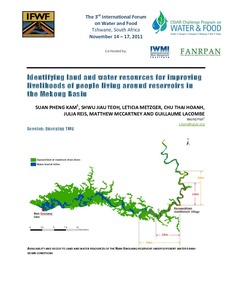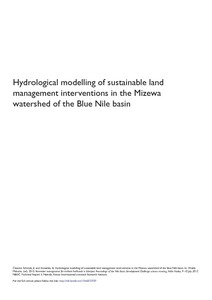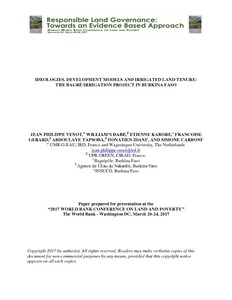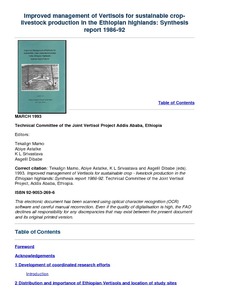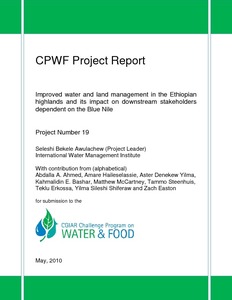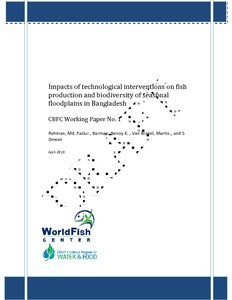Hydrological modelling of sustainable land management interventions in the Mizewa watershed of the Blue Nile basin
The current paper discusses the use of hydrological modelling tool to understand sustainable land management interventions in the Blue Nile basin of Ethiopia. A micro-watershed named Mizewa with a drainage area of 27 km2 in Fogera district was selected and instrumented with hydrological cycle observation networks in the year 2011. The SWAT hydrological modelling tool was used to simulate landscape-wide Soil and Water Conservation (SWC) investments.
Ideologies. Development models and irrigated land tenure: the bagré irrigation project in Burkina faso
This paper discusses the history of irrigation development and related land allocation in the Bagré area in the South of Burkina Faso. It specifically analyses current processes at play as part of the recent Bagré Growth Pole Project implemented by the government of Burkina Faso with support of the World Bank. The paper stresses the efforts made to put in place a fair and equitable compensation mechanism for the people being affected by the extension of the irrigated area downstream of the Bagré dam.
Impact of land management on soil macrofauna in the Eastern plains of Colombia
The effects of different types of land management on the soil macroinvertebrate communities on acid soil savannas of Colombia have been assessed using the Tropical Soil Biology and Fertility Program (TSBF) methodology. Invertebrates were identified among broad taxonomic units, TU (Orders or Families), counted and grouped in larger units, i.e., earthworms, termites, ants, beetles, spiders, miriapods, and "other invertebrates".
Improved management of vertisols for sustainable crop-livestock production in the Ethiopian highlands: Synthesis report 1986-92
Some of the papers in this report deals with nutrient management; land, soil and water management; grain, fodder and residue management; and technology validation and transfer. The other papers looks into development of coordinated research efforts; distribution and importance of Ethiopian vertisols and locations of study sites; a survey of the farming systems of Vertisol areas of the Ethiopian highlands, and modifying the management of vertisols. The report ends with a discussion on retrospect and prospects of the Joint Project on Vertisols management.
Improved water and land management in the Ethiopian highlands and its impact on downstream stakeholders dependent on the Blue Nile
Improved water and land management in the Ethiopian highlands and its impact on downstream stakeholders dependent on the Blue Nile – short title Upstream-Downstream in Blue Nile River project is one of the projects in the Nile Basin supported by the CPWF. It was implemented during from 2007 to 2009 through a partnership of 8 institutions. The Blue Nile is the major tributary of the Nile River, contributing about 62% of the Nile flow at Aswan.
Impacto del uso de la tierra en la macrofauna del suelo de los Llanos Orientales de Colombia
Improvement of rice genotypes for salt affected areas of Bangladesh
Impacts of Artisanal Gold and Diamond Mining on Livelihoods and the Environment in the Sangha Tri-National Park (TNS) Landscape
Gold and diamond mining constitute more than half of all mineral exploitation worldwide and an estimated 6 to 9 million artisanal miners are active in the gold and diamond sector. Africa hosts a third of the world’s natural mineral wealth, among which 65 percent of global diamond deposits. While mineral exploitation contributes to the livelihoods of many, it also generally leaves a negative impact on the environment, which may ultimately be detrimental to livelihoods.

